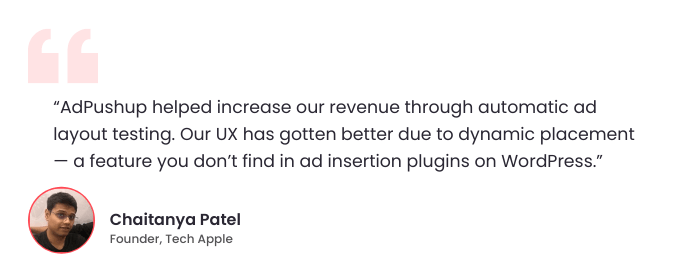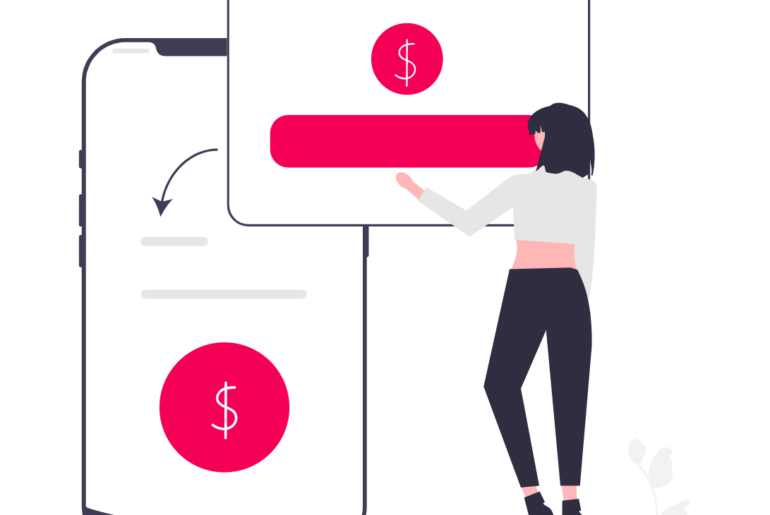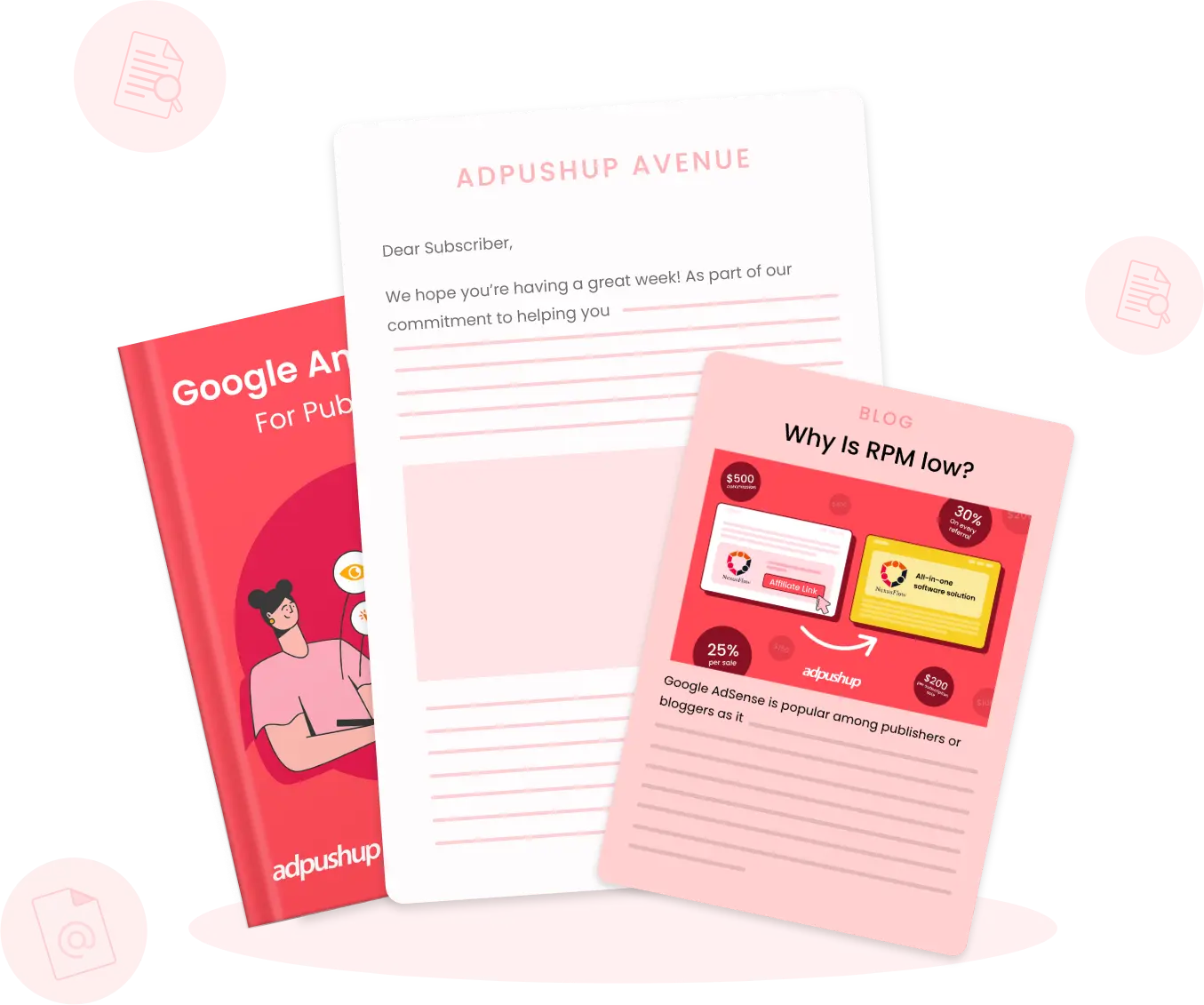Mobile games are not just a way to distract yourself, but a big business. As the competition grows, game app publishers need to find ways to keep players glued to their screens and work towards game app monetization. Let’s explore some tried and tested game monetization models that can help you squeeze ad revenue from your gaming apps in 2025.
Understanding gaming monetization is more than just a technical skill. To successfully monetize the gaming app, publishers need to go beyond ads and paid game models. To figure out how to earn revenue from your gaming app in a non-conventional way, you need to understand game monetization model and how to implement them.
According to PocketGamerz, the mobile gaming industry is expected to reach up to $175.3 billion by 2027. Many publishers have implemented gaming monetization strategies like selling exclusive virtual gear, integrating ads, offering subscriptions, etc. This blog will break down what the gaming monetization models are and the top 6 game monetization models that you can consider in 2025.
What is Mobile Game Monetization?
Game app monetization is a technique through which app publishers can earn revenue from their apps while keeping the gaming experience enjoyable and engaging for the users. Publishers can tailor monetization methods based on game type, audience, app design, etc. Game monetization plays an important role in terms of revenue, player engagement, and game sustainability. When done thoughtfully, game monetisation helps publishers to cover development costs and enhance user experience rather than distracting them from the game.
Game Monetization Models
With millions of players worldwide who love free-to-play mobile games, as a publisher, you can implement various game monetization models. These models are some popular techniques that can definitely help you generate revenue from your gaming app. Let’s explore different game monetization models and see which model works best for you:
1. In-Game Advertising
The in-game advertising model represents the most common way to implement ads into your game. Publishers can earn ad revenue by selling ad space in their gaming apps to various demand partners. It is a popular choice for running ad campaigns and, as per Netimperative, it can deliver a 12% uplift in the purchase intent of the audience. In-game advertising can be represented in various ad formats, and it’s totally up to publishers how they want these advertisements to look in their app. Here is the list of some ad formats that are effective and user-friendly:
1. Banner Ads
The oldest ad format, banner ads are one of the simplest and most commonly used for advertisement on various platforms. Easily noticeable, they appear at the top, bottom, or on the sides of the screen. To avoid any disruption, banner ads can be placed on the main menu or during game pauses.
2. Rewarded Video Ads
This ad format allows users to watch an ad in exchange for in-game rewards, such as extra lives, exclusive features, unlock characters, etc. Completely voluntary in nature, rewarded ads don’t force users to watch the ads, making them non-intrusive and more user-friendly.
3. Playable Ads
As the name suggests, playable ads are an engaging and effective way of promoting mobile games. They allow users to play a similar version of the game in the ad so that the user can build interest and download it. It’s a smart way to grab user attention with the game’s mechanics and appeal.
4. Integrated Ads
Integrated ads offer a unique way to incorporate advertisements directly into the gameplay. This ad format feels natural and realistic, and increases ad appeal for the user. Let’s understand through examples, in games related to adventure, players might come across branded gear or clothing items while exploring the virtual world, or in a cooking game, logos of real brands get featured on various packaged goods. Therefore, Publishers earn ad revenue through advertisements, and users enjoy the game without being interrupted.

2. In-Game Purchases
Expected to hit $296.8 billion by 2027 as per Focus On Business, the in-game purchase game monetization model allows users to play the game for free but charges additionally for exclusive game content or premium features. This model allows publishers to earn good revenue by offering a diverse range of content, features, and experiences, making users keep coming back for more. It mainly has three types:
1. Consumable
In-game items that are perishable i.e. that can be used or consumed over a period of time are known as consumables. They can be extra lives, an in-game weapon, or a character gear once used, players are nudged to buy more consumables to stay ahead in the game.
2. Non-consumable
Non-consumable items or features that players can retain permanently once they buy them. Unlike consumables, non-consumables provide lasting value and don’t expire.
3. Exclusives
Exclusives provide players with rewards that they won’t get anywhere else. It can be an exclusive level, a special item, or a kind of an upgrade to make the overall gaming experience more premium.
3. Sponsorship model
The sponsorship game monetization model involves partnering with brands to integrate ads directly into a game through a creative and engaging way. This monetization model can be tailored to match with game’s theme, and ensure that the ads feel and look natural and complement the user’s game experience.
Let’s understand it from examples, incorporating the brand’s logos, characters or items directly into the game, sponsored exclusive merch and clothes that players can unpack or purchase within the game.
4. Premium Paid Model
Under this model, publishers charge players a one-time fee to download or access the full game. This is one of the vintage game monetization model; unlike free-to-play games, premium games provide a premium gaming experience without any additional or hidden costs. The best part about Premium Paid games is that they provide an ad-free experience. This model is common with games that have storytelling, great visual designs, and unique mechanics. Stardew Valley, a popular indie game, is the perfect example of a premium paid game monetization model.
5. Subscription Game Monetization Model
The subscription model comes with a recurring fee to be paid either monthly or yearly. Once opted in, the user can access exclusive content, features, or levels in a game. It offers stable revenue for publishers and an enhanced gaming experience for the users.
The best part of this monetization model is that it offers users the flexibility to opt in or out of subscriptions anytime they want.
Famous games like Fortnite are based on a subscription-based model, offering players access to exclusive content, in-game weapons, etc., only if the user has opted in for the subscribed version of the game.
6. Hybrid Game Monetization Model
The hybrid game monetization model combines various revenue-generating techniques within a single model to optimize publishers’ earnings. In some cases, the hybrid model can be used to integrate ad formats like interstitial ads and banner ads for non-subscribed players while keeping paid content optional for the players. By using this game monetization model, publishers can leverage steady income from different sources and serve both free-to-play users and users who are willing to pay for premium or subscription models.
For example, the popular game Candy Crush Saga combines several game monetization models like in-app purchases, rewarded ads, subscription model, and lastly interstitial ads.
How to Monetize Your Gaming App?
Monetizing your gaming app couldn’t have been easier with today’s AdTech advancements. With so many options available in the market, app publishers can either stick to one method or use a hybrid model.
In our opinion, it’s wise to start with one game monetization model, and then with proper A/B testing, scale the strategy.
Coming back to the topic, the game app monetization model predominantly depends on the game’s genre. Let’s understand this better.
Casual games like Angry birds, Subway Surfer, or Temple Run mainly stick with in-app advertising. Since, games are played in free time, users don’t tend to stick around much. Hence, in-app purchases or even a freemium model won’t make sense.
However, applications like PUBG, Fortnite, Clash of Clans, and Honor of Kings are some games where users are willing to invest their time. These mid-core games offer more content compared to casual games, which makes players stick around for a longer time. As a result, in-app purchases tend to work well for these games. According to Business of Apps, Honor of Kings was the top-grossing game in 2024 with $1.86 billion in in-game revenue, all with in-app purchases.
Now comes the hardcore games. Such gaming applications can go a step above and implement subscription models to earn revenue. Games like Red Dead Redemption and GTA have implemented a download fee model, wherein users buy the game to play it. Games based on storyline, offer heavy content and player character freedom, and have advanced graphics that keep the gamer engaged. Only passionate gamers opt for these games and willingly pay for them as well.
AdPushup and Gaming Apps
AdPushup is a reliable, Google-certified publishing partner that collaborates with app publishers like you for successful app monetization. We offer plug-and-play VAST tags for gaming apps and OTT players.
The tags support video and rewarded ad formats, which are compatible with major industry-standard video players. Moreover, with our VAST tags, app publishers get access to pre-filtered and brand-safe demand that justifies the ad inventory value.
For other ad formats like native ads, display ads, banner ads, etc. AdPushup offers its lightweight, modular single SDK that not only gives access to premium demand but also smarter mediation logic and built-in analytics, all without overwhelming the app.
Key Takeaways (Quick Summary)
Mobile game monetization: A technique app publishers use to create a sustainable revenue stream from their gaming app.
Game monetization model include in-game advertising, in-game purchases, sponsorship model, premium paid model, subscription model, and hybrid game monetization model.
Monetize your gaming app: It mainly depends on your game’s genre. Hyper casual games go for in-game advertising as users don’t stick around for long. On the other hand, mid-core and hardcore games go for in-app purchases, and download fees model respectively. However, many times, hardcore games also go for a hybrid monetization model.
Gain access to premium demand, optimize performance without tech debt, and monetize smarter, on your terms. Fill out the form below and let Adpushup help.
Frequently Asked Questions
Mobile games can be monetized in multiple ways, some of the popular options are: in-game advertising, game subscriptions, sponsorships, premium paid downloads, and in-app purchases.
The most common ways to monetize your game app are in-app purchases, rewarded video ads, standard display ads, and game sponsorships. These powerful opportunities help game app publishers to monetize their apps on the basis of user interests and behaviour.
Game monetization is a process through which game app publishers earn money from the game they have developed. Publishers use methods like in-app purchases, ads, subscriptions, or paid versions of games to generate revenue. The main focus of game monetization is to ensure that monetization methods fit naturally without disrupting the user experience.
According to Tekrevol, gaming apps with an average of 1000 active users can generate revenue ranging from $10 to $200 per day through ads.








